
Scruffy coat, anemic goat
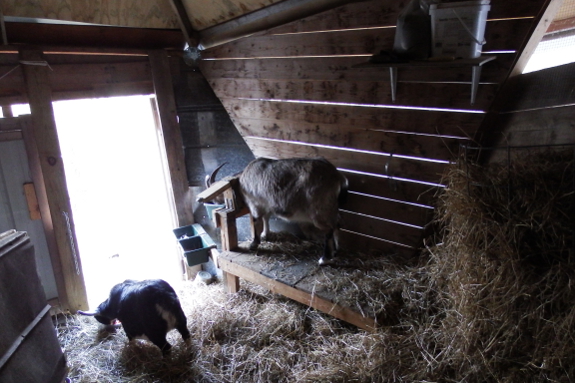
Good news! Artemesia is pregnant. I've been feeling under her belly right in front of her udder like Karla
suggested...feeling nothing. Then, Monday morning, a kick! Actually,
Artemesia's little parasite(s) were very rambunctious that morning,
kicking repeatedly...which is handy since I might have otherwise
considered that first movement a fluke. So now I can go back to
wondering what sex, what color, and how many.
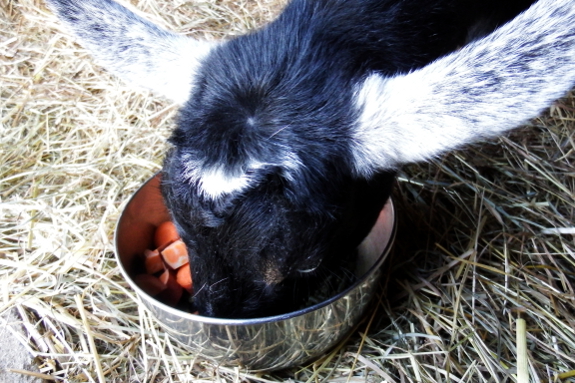
The bad news is,
Artemesia is no longer in tip-top health. About a week ago, I started
noticing her fur losing its shine and a bit of dandruff cropping up.
Granted, both of our goats are also shedding their winter fur at the
moment, which gives them a bit of a scruffy look...but Artemesia just
looked scruffier than she ought. A peek at her inner eyelids determined that they were quite a bit paler than Abigail's, a sure sign of anemia and a likely sign of worms.
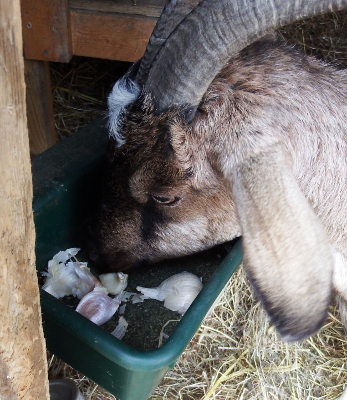 Just as when this last happened, I first took a look at the kelp feeder. It wasn't precisely empty...but
goats are a lot like cats. You know how cats will look at the last two
tablespoons of kibble, turn up their noses, and beg for more as if
they're starving to death? Apparently, that's a goat's take on the dregs
of kelp as well.
Just as when this last happened, I first took a look at the kelp feeder. It wasn't precisely empty...but
goats are a lot like cats. You know how cats will look at the last two
tablespoons of kibble, turn up their noses, and beg for more as if
they're starving to death? Apparently, that's a goat's take on the dregs
of kelp as well.
So I topped up the kelp
feeder and started the herd on a daily garlic campaign as well. I've
tried chopping up garlic and putting it in our goats' feed...and they
have a fit. Rightly so --- who wants a big bite of raw garlic when
you're expecting sweet potatoes? However, I soon discovered that goats
are quite willing to eat an after-dinner mint garlic
out of the kelp feeder. In fact, they've been going through a head of
garlic a day between them --- I'll have to cut them off soon!
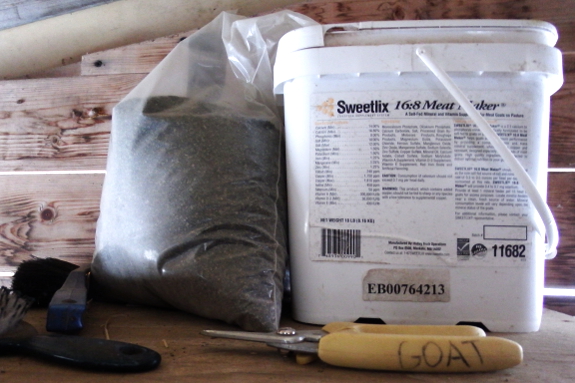
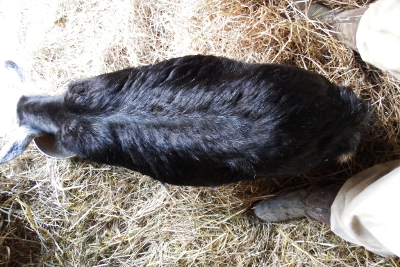 Within
four days, Artemesia's fur started shining again. But her eyelids still
aren't as bright as Abigail's. I'm kicking myself for not looking at
Artemesia's eyelids when she seemed in tip-top health since individual
goats can have different baselines. Instead, I'm ordering some chemical
dewormer just to be on the safe side...and I'm also going to pull out
our microscope and see if I can get an assessment of worm load in her
poop. Mark's going to love our dinner-table conversations this week....
Within
four days, Artemesia's fur started shining again. But her eyelids still
aren't as bright as Abigail's. I'm kicking myself for not looking at
Artemesia's eyelids when she seemed in tip-top health since individual
goats can have different baselines. Instead, I'm ordering some chemical
dewormer just to be on the safe side...and I'm also going to pull out
our microscope and see if I can get an assessment of worm load in her
poop. Mark's going to love our dinner-table conversations this week....
Want more in-depth information? Browse through our books.
Or explore more posts by date or by subject.
About us: Anna Hess and Mark Hamilton spent over a decade living self-sufficiently in the mountains of Virginia before moving north to start over from scratch in the foothills of Ohio. They've experimented with permaculture, no-till gardening, trailersteading, home-based microbusinesses and much more, writing about their adventures in both blogs and books.
Want to be notified when new comments are posted on this page? Click on the RSS button after you add a comment to subscribe to the comment feed, or simply check the box beside "email replies to me" while writing your comment.

Nita --- We don't give her dairy hay, but we do amend with alfalfa pellets to make up for it. It sounds like you're leaning toward it being a feed issue rather than a worms issue? I feel like that's definitely a possibility, so I'm increasing her daily ration (and starting to guard her bowl while she eats so our bully goat won't get half of it).
Erica --- Good point! I figured giving her a few days of lots of garlic would act like the three-day dewormer campaigns I hear about. I've taken her off it now, although I might give her more in about a week.
I was thinking a feed issue. There is a vet saying that 95% per cent of cattle maladies can be cured by correct and ample feeding. I would guess that would be the same for goats. With the cows, if they have enough to eat (forage not grains) they are parasite resistant. You've done really well with your rotation maybe she just needs more to help her with pregnancy etc.
Be careful with your conventional wormers it can be a problem in the soil.
Can't wait to see the baby!